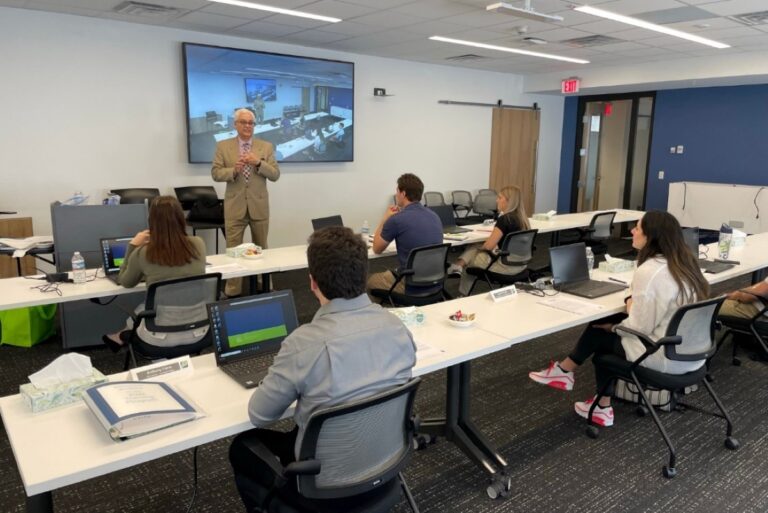Igniting Customer Loyalty to Enhance Your Brand Competitiveness
What are effective ways to build customer loyalty? Originally appeared on Quora: the place to gain and share knowledge, empowering people to learn from others and better understand the world.
In an era of tough local competition and aggressive startups, every business wants to get an upper hand over its rivals. Technology and globalization have been crucial in bridging boundaries amongst businesses today.
Breaking traditional norms and age-old customs have taken prevalence in this new age of doing business. However, the standard business practice of solid customer retention remains the same. Having unique ideas to grow your business can only get you so far if you are unable to retain existing customers that value your products and services.
Building Brand Value
Branding is one of the most crucial aspects of any business. It doesn’t matter if a business is a small business or a large firm, whether it is a wholesale business or a retail business. An effective brand strategy involving your customers’ interests can give you a major edge in the competitive market. A brand is nothing but a promise to a customer from a business.
It tells the customers what they can expect out of your business and the essential quality that differentiates you from your competitors in the market. Your brand reflects your company mindset and who you are perceived as in front of others.
Building brand value doesn’t come easy. Brands like Levis, Nike and Starbucks haven’t just risen to success overnight. Building a brand takes time, money and patience. Branding is just as important to small businesses as it is for large firms and conglomerates.
Did you know that 67% of entrepreneurs fail within their very first year of business, and out of the 33% that survive, only 5% of them will stay in business after 3 years? Most of these businesses fail as they are unable to attract AND retain the right customers.
Now, you may be wondering what steps you should take towards growing your business with a massive number of loyal customers who are dedicated to your brand so you can sustain in the long-term.
Here are some fundamental things you can do to make it happen:
Provide A High-Value Product and Service
The best way to survive in the competitive market is to obtain customer satisfaction through consistent delivery of high-quality products and services. Quality can be equated with achieving customer satisfaction. Customer requirements tend to change over time and are affected by the competition in the market.
There are many ways to ensure a positive customer experience within your organization:
• Continuous Improvement
Continuous improvement is a subset of quality control within an organization. With improvement in quality and productivity, comes a reduction in costs, as well as an increase in satisfaction. So, it’s a win-win situation for both you and your customers. Many small and large companies have been rewarded with long-term profitability by making simple strides to improve their products, services, and processes.
• Consistency
Being consistent is a significant element of the continuous improvement concept. A certain degree of standardization is vital for the growth of any company, but this shouldn’t come at the cost of innovation. There needs to be well laid out plans for all operations starting from the production to the delivery of your products and services. This ensures that your company is able to use all of its resources at the best level and that your customers are always met with a positive experience when dealing with your brand.
• Teamwork
Teamwork is essential for a business to succeed in reaching its goals. A cohesive unit working towards attaining the same goals performs better since every employee understands their role and what is expected of them. Teamwork can take many forms like quality circles, cross-functional groups etc.
• Periodic analysis
A thorough measurement and analysis of the different processes within the production cycle can help identify gaps and deliver consistency among products and services. A routine analysis will help an organization in understanding the critical elements in the operations phase. If any deviations are identified, they can be rectified in a correct manner thereby improving the quality and productivity.
• Employee Training
Another crucial aspect in ensuring quality standards in the products and services is training. This is a vital aspect of a survival strategy and should incorporate a continuous learning experience so that the employees can deliver to your expectations.
Every employee needs to undertake proper training to understand the procedures and mechanical skills required to perform their jobs effectively. Once this has been accomplished, quality control can be established in a better way.
Excel at Customer Service
Excelling at customer service is a continuously evolving process, one that can be refined and adapted over time. This process starts with the proper training of employees in an effective way that will help the business serve its customers in a better way.
Research has shown that it takes approximately 12 good service experiences to make up for one bad experience; but that’s IF the customer sticks around to do business with you again. Once they are disappointed with your customer service, they won’t hesitate in looking for the next best viable option for them. It’s a free market at the end of the day.
There are certain skills that your front-line staff needs to have if they are to help customers realize a positive experience when dealing with your brand.
These skills have been listed down below:
• Attentiveness & Availability
Your staff needs to be attentive to best serve the questions and concerns your customers may have. Being attentive in identifying the needs of the customers can help provide an overall better service level to customers, which will keep them coming back.
This can be done by acquainting oneself with the specific needs of the customer, fully-understanding your company’s products and services, and always making your customers a top priority.
• Patience
Patience is an important virtue for any employee who is dealing with your customers in any form of contact – whether it be in person, via the phone, or via the internet. Not all customers are the same; some are irate and some are full of questions.
One must know how to handle customers with patience and meet their demands in an orderly fashion. Otherwise, these customers will quickly turn towards a competitor to get the level of service they desire.
• Good communication skills
When it comes to boosting brand loyalty, using authentically positive language with your customers is a critical aspect of communication. Your staff must ensure that your customers fully understand whatever it is that they are trying to convey.
If one doesn’t have the suitable communication skills to carry out the job, this might lead to major confusion and misunderstanding on the customer’s part. Successful businesses know that a well-informed buyer will conclude their decision to purchase based on the communication efforts presented by the staff.
• Pleasant behavior and demeanor
Your employees need to have a calm demeanor about themselves while dealing with a customer. Today’s business scenario has become more competitive than ever before; and price isn’t the only determining factor for consumers when choosing a company to do business with.
Employees with a positive vibe about themselves can pleasantly guide prospects about their choices and help them in their decision-making process. On the other hand, employees with a negative demeanor can send your prospects running right into the arms of your competition.
• Time management skills
There is a limit to the amount of time you can give to any customer when discussing your products and services. Your employees should be concerned with getting customers what they want, but in a manner that makes sense time-wise. In other words, they should know how to effectively communicate in a way that quickly answers your customers’ questions and concerns; if they are well-trained, this should not be an issue.
If not, they could end up wasting their time (which is YOUR time), as well as your customers’ time. Once a customer feels as if their time is not valuable, they can start to lose faith in your brand.
Speed is crucial for a business especially when a customer is requesting something that’s time sensitive. Not giving timely services and responding to a client’s request in a timely manner can eventually turn the tide against your business. Giving quick responses and acting on them in a timely manner can give you the edge against your competitors.
• Fixing mistakes and solving problems
A fundamental practice for just about any business is being able to provide effective solutions and rectify any mistakes on your part. Focusing on a high-quality output should be the norm every single time. Doing this ensures that your business demonstrates that you have a high level of standards and will do whatever it takes to make your customers happy.
• Going the extra mile & putting customers first
Any customer would appreciate efforts on a business’ part to help them out with a little something extra. So whenever there’s an opportunity to go above and beyond your customers’ expectations (without costing you too much time or money), don’t miss out on fulfilling it. If a customer feels valued, they would automatically feel the need to do business with your company in the long run.
Reward Long-Term Customers
A loyalty program is an effective way to reward your existing customers who make frequent purchases. It is also known as a “rewards program,” which is usually offered by companies to keep their customers happy. There are many ways to reward your loyal customers like:
- Create a Loyalty & Rewards Program
- Give Away Free Items Periodically
- Invite Customers to Try Out Developing Products for Free
- Hold Exclusive Product Previews for Loyal Customers
- Team Up with Other Businesses to Provide Discounts on Their Products and Services to Your Customers
- Offer Preferential Service Terms to Customers
- Offer Incentives for Referrals
Use Customer Feedback to Enhance Operations
No business is perfect; and while your products may be faring well and resonating in the eyes of your customers, there is always a room for improvement.
Customer feedback is a necessary tool for the growth of your business and is a reliable tool to find out the problematic areas that need to be fixed. Using positive feedback can help you stick with what’s working, while negative criticism can be used to improve your products and services.
Furthermore, customer feedback can improve your company’s reputation as it shows that you actually care about their feelings and thoughts.
As opposed to the old age ways of obtaining customer feedback, such sending out a letter or having a one-on-one conversation with a customer, there are new and more effective ways to do so; and with the growing advent of technology in current times, this will only get better.
Listed below are some of the many ways your business can collect and use the feedback of your customers:
- Email Customers for Reviews and Personal Testimonials
- Enable Customer Reviews on Your Company Website
- Gather Feedback Through Various Social Media Platforms
- Include Feedback Forms with Your Receipts
- Create Digital Polls and Surveys for Your Customers
Brand building is a key factor in giving your organization a positive status and a major competitive advantage. However, this needs to be built on a continuous basis, which is characterized by ever-changing developments in technology and rise in customer expectations.
In order to build a brand that your customers will love and continue to do business with, you must put them first and adapt to new age practices that will help you meet their expectations. Furthermore, digital marketing plays an important role in increasing loyalty and encouraging customers to return to you time and time again. By using these tools to build relationships and improve the customer experience, your business can well and truly reap the rewards.
Contributed by Jonathan Perkins, Small Business Consultant (2004-present)









